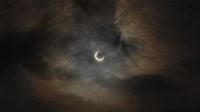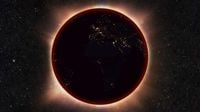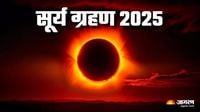The first solar eclipse of 2025 is set to occur on March 29, and it promises to be a captivating astronomical event. This partial solar eclipse will begin at 2:20:43 PM Indian Standard Time (IST) and reach its maximum at 4:17:27 PM IST, before concluding at 4:13:45 PM IST. The entire event will last approximately four hours, offering a unique spectacle for viewers in certain parts of the world.
According to reports, this solar eclipse will be visible across a wide area, including regions in Asia, Africa, Europe, the Atlantic Ocean, the Arctic Ocean, North America, and South America. However, those in India will unfortunately not be able to witness this celestial event, as the moon's shadow will not pass over the country. Instead, the best viewing experience will be available in North America, where the eclipse will occur around sunrise, providing an optimal backdrop for enthusiasts.
But what exactly is a solar eclipse? A solar eclipse occurs when the moon passes between the sun and the Earth, blocking the sun's light either partially or completely. In this case, since the moon will only cover a portion of the sun, it is referred to as a "partial solar eclipse." This phenomenon is always followed by a lunar eclipse approximately two weeks later, or vice versa.
The eclipse on March 29, 2025, coincides with the Amavasya Tithi, a new moon phase in the lunar calendar. This timing is significant in various cultural contexts, as many traditions hold beliefs regarding eclipses. However, in India, the "Sutak Kaal," a period considered inauspicious, will not apply since the eclipse will not be visible from the country.
As the date approaches, excitement is building among skywatchers and astronomers alike. This event marks the first solar eclipse of the year, and many are eager to observe its effects. During a solar eclipse, observers may notice changes in the environment, such as sharper shadows and a drop in temperature. Animals may also exhibit unusual behavior, reacting to the sudden dimming of light.
While the event is thrilling, safety precautions are paramount when viewing a solar eclipse. Unlike a lunar eclipse, which can be safely observed with the naked eye, looking directly at a solar eclipse can result in severe eye damage, including retinal burns. To safely view the eclipse, experts recommend using special eclipse glasses that meet the ISO 12312-2 international safety standard. Alternatively, viewers can create a pinhole projector using simple household materials to observe the eclipse indirectly.
NASA has emphasized the importance of proper eye protection during solar eclipses, reiterating that regular sunglasses do not provide adequate safety. Observers should ensure they are using certified solar viewing glasses to prevent potential harm.
As anticipation builds for the solar eclipse on March 29, 2025, it serves as a reminder of the wonders of our universe. While many in India will miss out on this occasion, the event will be a highlight for those in the Northern Hemisphere, particularly in parts of northeastern Canada and Greenland, where the maximum eclipse will be visible.
In summary, the solar eclipse of March 29, 2025, is an exciting event that will captivate viewers across various parts of the world, even as it leaves India in the dark. With the right precautions and preparations, those fortunate enough to witness the eclipse will experience a remarkable moment in time, showcasing the beauty and intricacies of our solar system.








